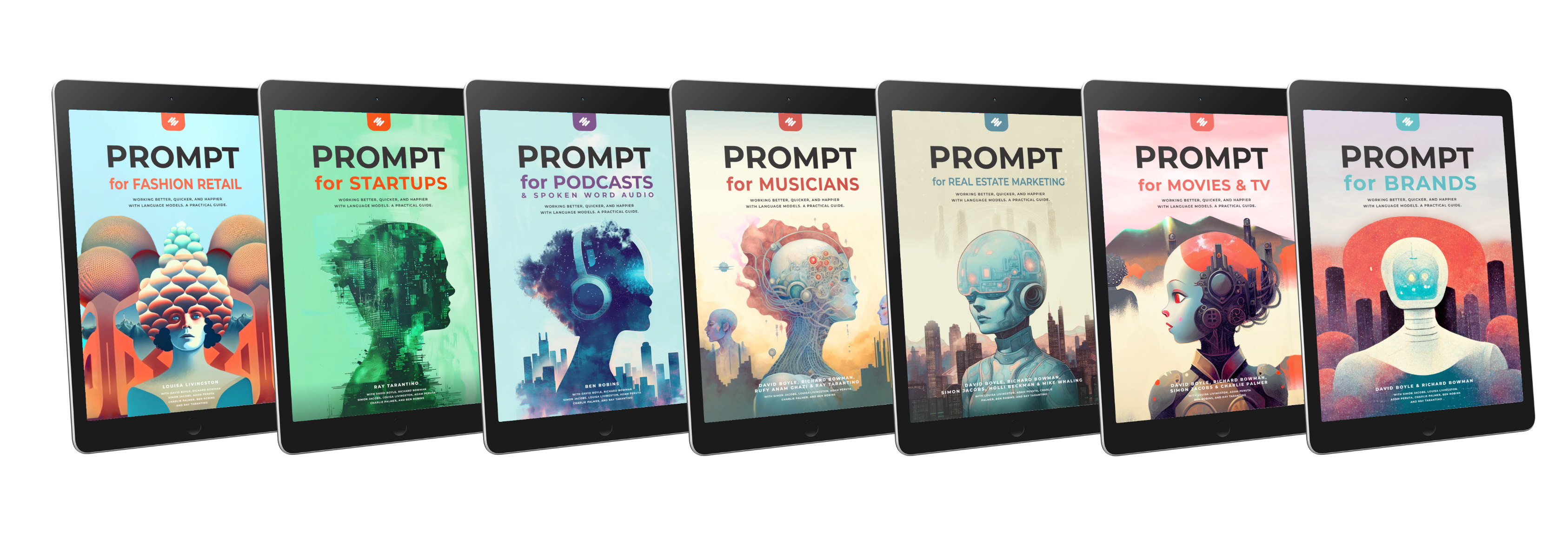In the rapidly evolving world of large language models (LLMs), many organizations are eager to adopt these advanced AI tools to streamline processes and enhance productivity. However, in our experience, a lack of clarity and strategic planning often leads to haphazard and disorganized rollouts. To ensure that your organization reaps the full benefits of LLMs, it's crucial to adopt a job-first approach and focus on training and implementation.
The Job-First Approach: Identifying Key Tasks
Before selecting a language model, organizations should start by pinpointing the specific jobs they want LLMs to help with. These may include:
- Assisting executives in thinking, innovating, prioritizing, and communicating more effectively (essentially the topics of our PROMPT series of books!)
- Enhancing coding performance
- Streamlining operational tasks through billions of API calls
By focusing on the desired outcomes and economic value of improving these jobs, organizations can justify investments in LLMs and ensure that their implementation aligns with their overall goals.
Training and Implementation: The Key to Success
Once key jobs have been identified, organizations should prioritize training their teams on how to use LLMs effectively for each specific task. This includes providing guidance on:
- Correct prompting techniques
- Useful language for prompts
- An effective iterative process
- How to evaluate model outputs and incorporate human feedback
- How to be a subject matter expert to identify incorrect outputs
By focusing on training and implementation, organizations can drive usage and maximize the economic benefits of LLMs.
Scaling Up: Transform One Job at a Time
Rather than trying to implement language models for multiple use cases simultaneously, organizations should concentrate on transforming one key job first. By demonstrating success and tangible benefits in that area, they can then scale up to other jobs and tasks.
Evaluating Success: Metrics that Matter
When assessing the effectiveness of LLMs, it's important to consider both model performance and human metrics. To gauge the success of LLM implementation, organizations should ask:
- Do users feel their work is quicker and better?
- Do they feel more confident and satisfied in their jobs?
In addition to model-level metrics like response usage, organizations should also measure the personal impact of LLMs on individual users.
Staying Flexible: Adapting to Change
As new language models continue to emerge, it's crucial for organizations to remain flexible and adapt their systems as needed. This means making models easily swappable and being prepared to update proprietary models when necessary.
The Bottom Line
By taking a strategic, job-first approach to implementing language models, you can minimize chaos and ensure that your investments yield tangible benefits. By identifying key tasks, providing comprehensive training, and focusing on one job at a time, you can maximize the potential of LLMs and revolutionize the way they work.
Many large, global companies have asked us to assist them in the above. We enjoy this work. If you're in this situation, don't hesitate to reach out! david@audiencestartegies.com
